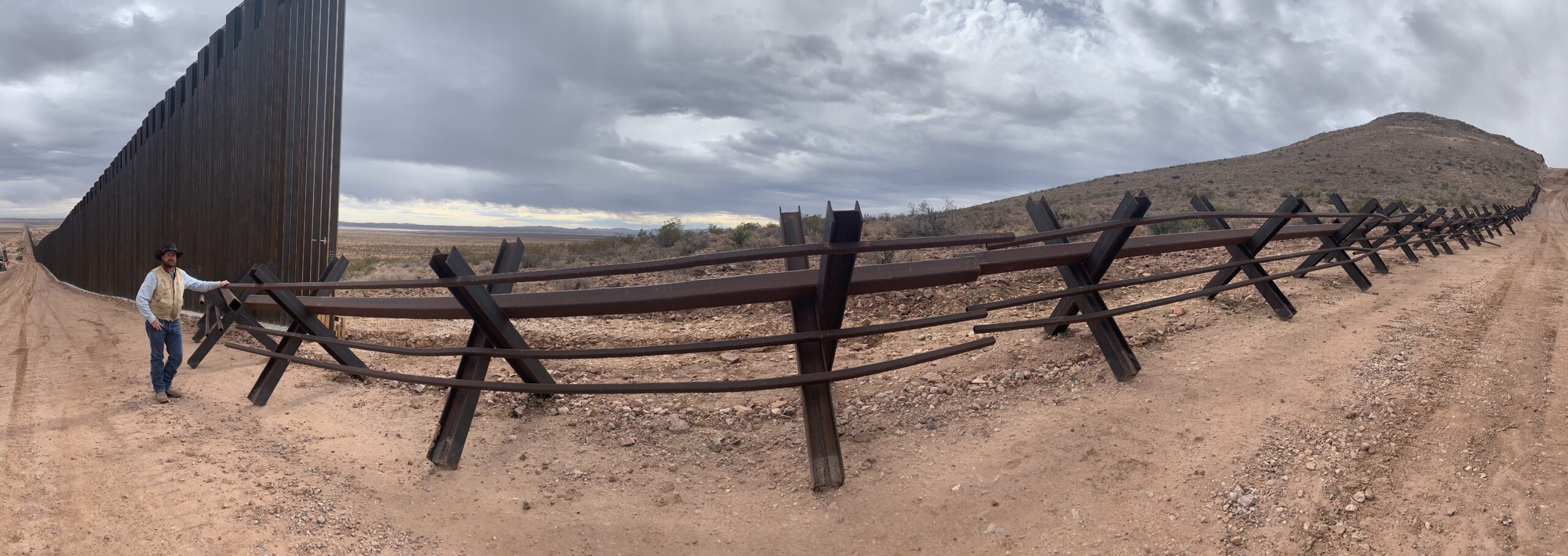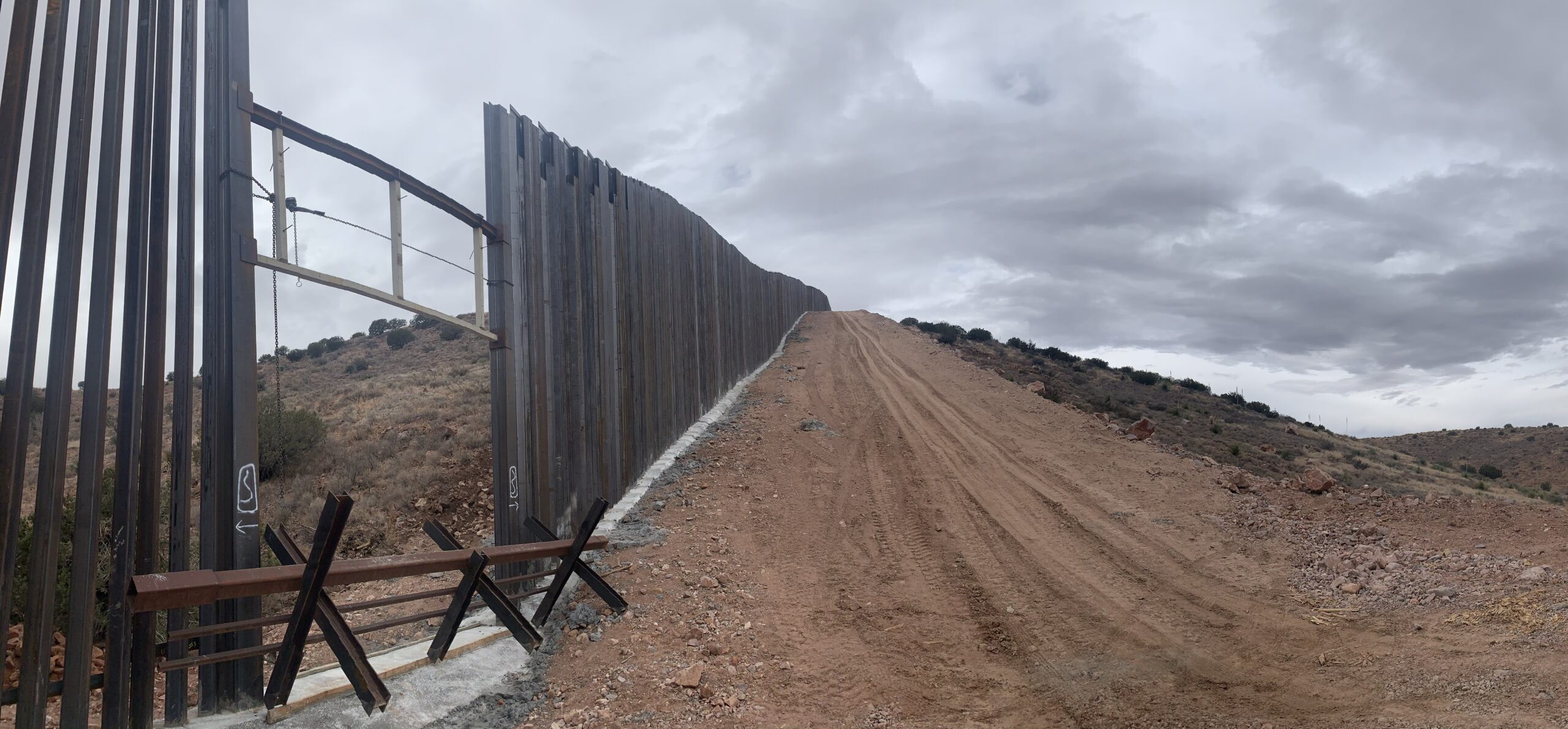HERMANAS, New Mexico — Construction crews are packing up after coming within 1 mile of finishing a roughly 90-mile border wall project outside El Paso, Texas.
Ten days after President Biden halted the Trump administration’s border fence projects, workers are slowly closing down the massive job site. Driving on dirt roads through the construction project, the rancher whose property this site is located on says most machinery and workers have been shipped out. It still looks as if it will take several more weeks to sort everything out.
“This is absolutely dead. Prior to inauguration, this place was hopping,” said Russell Johnson, whose family has lived and raised cattle on a strip of land that runs against 8.5 miles of the southern border for more than a century.
Under former President Donald Trump, more than 450 miles of wall were installed across all four border states, and more than 300 more miles were going up or about to be installed. The overseeing federal agency, U.S. Customs and Border Protection, told construction crews nationwide to suspend operations by Jan. 27, with the exception of safety measures. The government has not said how leftover supplies will be removed.
Wall was installed here because it has long experienced breaches at the border despite its remoteness. Roads on the southern side of the border allow easy access to the border, which until 2008 only had a barbed wire fence dividing the countries. That year, maroon steel beams no taller than four feet were set up in the valleys between the big hills of this region to prevent vehicles from driving through the barbed wire fencing, as was common in the 1990s and 2000s.

Every time the barbed wire fences were breached, it fell on the landowners, not either government, to patch them up, primarily out of concern that their cattle would mistakenly wander into the other country.
Under the Trump administration, this region was deemed to be a priority for wall projects, including projects to replace this shorter fencing. SLS Construction, a company based out of Galveston, Texas, won the federal contract to build a 30-foot slatted steel wall that began just outside El Paso, Texas, and went about 90 miles west. The wall was intended to stretch across the high desert of southern New Mexico and end where another border wall project in western New Mexico had stretched eastward near Hermanas, where Johnson lives.

The last beam that SLS put into the ground was placed on Oct. 16, 2020, according to signatures and dates written on the beam. It stopped less than a mile from the other project, where it had been slated to conclude.
Directly next to the main work site for the project, dozens of workers in neon vests and white hard hats are standing around as the space is tidied up. The work site is so large that it takes a full 60 seconds to drive past it. Dozens of vehicles, including personal cars, company pickup trucks, and construction vehicles such as forklifts and flatbed trucks, are parked or driving around. Hundreds, if not thousands, of the short barrier that was taken down to make way for the new wall are lined up on the dirt, some stacked on top of one another, in what looks like an endless junkyard of old fencing.
At the top of another hill nearby are hundreds more of the short steel fence posts. They are stacked on top of one another and in two large piles under an overcast sky.
The $4 billion in funding that Congress approved for the wall and $10.5 billion that Trump diverted from other federal department budgets was for the physical wall, but they also included the installation of roads to replace dirt paths, lighting along the entire wall, and fiber-optic sensors underground.
Concrete was used to hold up the steel beams once they were dropped into the trenches, and then it was poured into each beam to make them harder to cut through. But because work stopped prematurely, many of the beams on his property have not been filled and are susceptible to being easily cut through with power tools.
The portion of wall that is incomplete goes over a big hill. The top of the hill was imploded with explosives so that it is not as tall for Border Patrol vehicles to drive over. Two massive rock-crushing machines were brought in to turn the exploded mountaintop rock into gravel that could then be laid for all-weather roads. Approximately 250,000 pounds of rocks were supposed to be crushed into gravel for the roads. Just 70,000 pounds were crushed before Jan. 21 and have been piled into a mountain, Johnson said.

Several spots along the wall have built-in gates so that international boundary commission officials can access historic border marker monuments that were placed here before 1900. There is a gap in the wall where one gate is missing and instead has a short fence dropped in front of the opening to keep cattle or vehicles from going north or south, though it will not stop anyone from walking through.
Two other gates have been installed, but they have not been locked shut. Instead, a piece of steel less than an inch thick has been welded at the center of the doors to prevent someone from pushing them open. One welded gate has already been breached.
“Somebody on the south side actually beat it hard enough that they finally broke those welds and opened the gates, so they went right through,” said Johnson, who left ranching to became a Border Patrol agent for five years before returning to the family business during the Obama administration.

Thousands of pieces of discarded fencing and unused steel are sprinkled around the area. Workers poke around the site, but there does not seem to be any rush in getting things done.


